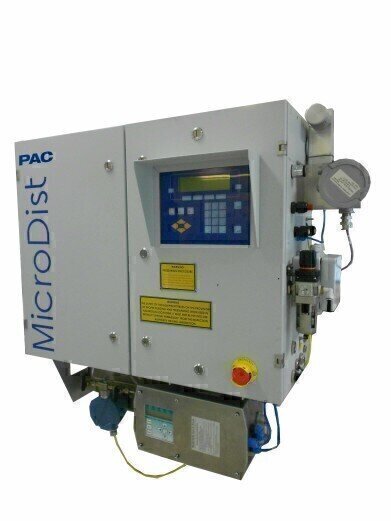Analytical Instrumentation
Increase Diesel Production with Accurate Distillation and Cetane Index Analysis
Mar 19 2014
The demand for diesel is growing at twice the rate of gasoline, which has been declining greatly in the U.S. and is expected to continue declining as drivers shift to more fuel-efficient vehicles. In addition, as of mid-2013, margins for diesel produced on the U.S. Gulf Coast were running just above $16 per barrel, while the margins on finished gasoline were much lower at just under $8 barrel (According to CNBC).
With increased demand and better margins, refineries must maximise diesel production to increase their overall profitability. One way refiners can maximise production is by utilising the PAC MicroDist, an online distillation analyser providing boiling range characteristics of various petroleum products and Cetane Index calculations in accordance with ASTM D4737 and D976. Online microdistillation data enables refineries to move the temperature of the cutpoints closer to the target without waiting for laboratory measurements. This helps refiners produce more of the expensive product and less of the cheaper product. Increasing T90% by 1°C may result in 0.5 to 1% additional Diesel production; depending on production capacity, this can impact up to $1 Million USD of incremental profits.
Learn more by downloading the white paper, 'The Advantage of Real Atmospheric Distillation Complying with the ASTM D7345 Test Method in the Distillation Process'.
In addition, you can read the case study about a large refinery that produces over 350,000 bpd which reported their results when utilising the PAC MicroDist. Overall, the refinery reported the following results after the 720-hour MicroDist evaluation:
- Superior repeatability
- High availability - above 98%
- Solutions for several process applications
- Fast analysis cycle of 4-7 minutes
- User-friendly
- Easy installation
With the fast analysis time, the refinery could calculate cut points as fast as the variables were changing. This allowed them to minimise product giveaway and maximise their profitability.
Digital Edition
PIN 25.2 Apr/May
May 2024
Safety - Carbon monoxide toxic and flammable gas detection Analytical Instrumentation - Density: A fundamental parameter at critical stages within the petroleum sector - Advancements and...
View all digital editions
Events
May 18 2024 Rio de Janeiro, Brazil
May 19 2024 Minneapolis, MN
May 20 2024 Columbus, OH, USA
May 20 2024 Dubai, United Arab Emirates
May 23 2024 Beijing, China



















